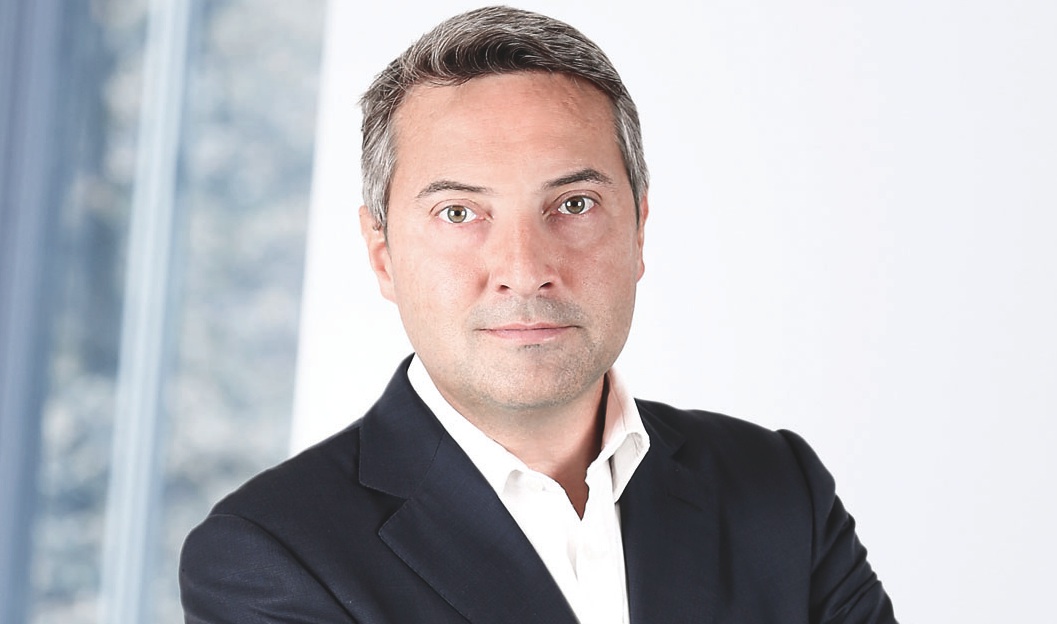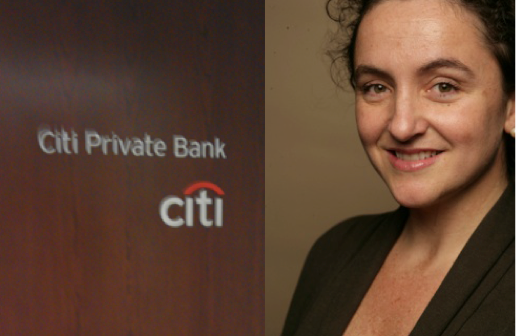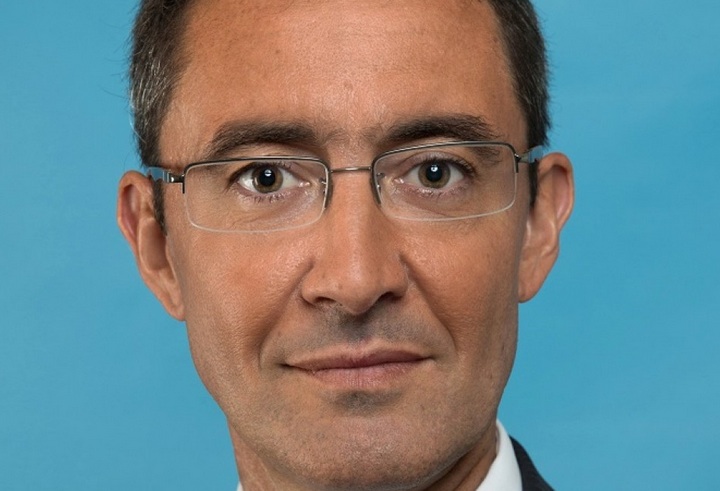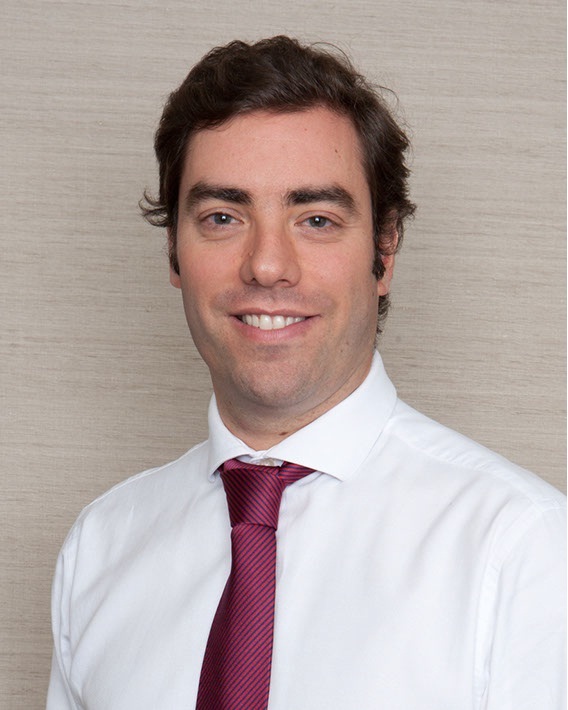Santander Will Also Pass Negative Interest Rates to its Institutional Clients
| For Alicia Miguel | 0 Comentarios

| For Alicia Miguel | 0 Comentarios

| For Alicia Miguel | 0 Comentarios

As of 1 September, Ludovic Colin has been appointed Head of Global Flexible Investment team at Vontobel Asset Management’s Fixed Income boutique. The newly created team will be responsible for the management of the Vontobel Fund – Bond Global Aggregate and Vontobel Fund – Absolute Return Bond.
Ludovic Colin will take over as lead Portfolio Manager of the Absolute Return Bond strategies, with Jack Loudoun as deputy Portfolio Manager. Ludovic Colin joined Vontobel Asset Management in 2015 as senior Portfolio Manager. Prior to that, he was a Cross Asset Macro Specialist at Goldman Sachs and Portfolio Manager at Amundi in London. Jack Loudoun, who joined Vontobel Asset Management in 2015 as Portfolio Manager for the Absolute Return Bond strategies, has a long track record in managing absolute return bond strategies going back to 2002, mainly working for Invesco and Deutsche Asset & Wealth Management. Throughout his career, Jack has been responsible for global rates, credit and macro strategies.
“The new team will further broaden our well established flexible fixed-income capabilities, providing our clients with both total and absolute return offering”, said Hervé Hanoune, Head of Fixed Income at Vontobel Asset Management.
Vontobel’s Zurich-based Fixed Income boutique was established in 1988 and focuses on four actively managed product lines: Global & Swiss Bonds, Corporate Bonds, Emerging Markets Bonds and Global Flexible Bonds. The boutique is comprised of 24 investment professionals with an average of 15 years of investment experience. Vontobel’s bond experts share the belief that fundamental research, independent thinking and active portfolio management are the key to consistent outperformance.
During recent years, Vontobel has seen the assets under management of its fixed-income offering grow to CHF 25 billion. Besides the acquisition of TwentyFour Asset Management, one of the key drivers of this growth has been the inflows into the Flexible Bond funds of Vontobel Asset Management’s Zurich based Fixed Income boutique.
| For Fórmate a Fondo | 0 Comentarios

Multi-asset funds in Europe have not lived up to the sales pitch of providing a buffer against unsettled markets, according to the latest The Cerulli Edge – Global Edition, which advises managers of poorly performing funds within the asset class to consider cutting fees.
While Cerulli Associates, a global analytics firm, acknowledges that some multi-asset sectors are faring better than others, its evaluation of the overall performance of the asset class over the 12 months prior to July 2016 shows that, on average, returns have been negative.
In terms of asset-weighted average returns, none of the multi-asset sectors, as defined by Morningstar, were in positive territory during the review period. Cerulli notes that a number of the funds are highly correlated to the stock market, some by up to 90%, which, given market conditions, defeats the funds’ key objective of providing stability.
“The past 12 months have been tough for multi-asset managers. Overall, the asset class has failed its first real test–and investors are beginning to take note. While a single year is not enough to truly judge performance, it does serve as an indicator,” says Barbara Wall, Europe managing director at Cerulli.
Average multi-asset fund fees (ongoing charges) in the UK have dropped 16 basis points in the past two years. Cerulli believes that charges will continue to fall in both the UK and mainland Europe. “More managers may be forced to sacrifice part of their fees,” says Angelos Gousios, an associate director at Cerulli Associates.
He says the case for liquid alternative multi-asset funds sticking with existing charges on the basis that special skills are required no longer holds water. “Fund buyers will not hesitate to switch to less expensive alternatives if performance and risk targets are not met,” says Gousios.
Noting that cheaper, more innovative strategies such as smart beta multi-asset funds are on the increase, Gousios warns that managers “charging unjustifiable performance fees in both rising and falling markets are at risk of being marginalized.”
Despite Cerulli’s damning assessment, the firm is optimistic with regard to the longer term prospects for multiasset funds. “Tailwinds that will increase their exposure include defined contribution pension schemes in the UK. However, inflows are likely to be more concentrated from now on, with managers that fail to deliver falling by the wayside,” says Gousios.
| For Gabriela Huerta | 0 Comentarios

Citi Private Bank hired Sonia Garcia-Romero as Managing Director and Investment Counselor Team Leader, Latin America, ex-Mexico and Brazil. Garcia-Romero will work from the Miami office and report to Lisandro Chanlatte, Head of Investment Counselors for Latin America. In this capacity Garcia-Romero will be responsible for leading investment services for ultra-high net worth clients. She will also lead the Multi-Family Office business and will focus on increasing penetration of capital market solutions for the firm’s clients.
“Sonia has over 20 years of experience working in the financial industry and an impressive track record of devising innovative actionable investment solutions,” said Chanlatte.
Garcia-Romero joins Citi from J.P. Morgan Private Bank, where she served as the Market Manager and Investments Team Leader for the Andes, Central America and Caribbean region. Prior to J.P. Morgan Private Bank, she worked in the Investment Bank and on the Global Markets Treasury Liquidity and Repo desks for J.P. Morgan. She holds a Bachelor of Science from C.U.N.E.F (Universidad Complutense) in Madrid.
“The global platform and institutional capabilities are just a few reasons I am excited to be joining Citi Private Bank. I look forward to building on the success of the Latin American Investments team and continuing to provide our clients with sophisticated financial solutions,” said Garcia-Romero.
| For Fórmate a Fondo | 0 Comentarios
Old Mutual Global Investors (OMGI), part of Old Mutual Wealth, today announces the appointment of Cristiano Busnardo, who joined the company on 1 September, in the newly created position of country head, Italy. He will report to Allan MacLeod, head of international distribution.
Based in OMGI’s new Milan branch, which is subject to regulatory approval, Cristiano will be responsible for driving OMGI’s growth within Italy. Since its formation in 2012, OMGI has steadily developed a European presence and now manages GBP 3.9bn for clients across Europe (ex UK) with GBP 106.8m on behalf of Italian investors. Cristiano is tasked with nurturing OMGI’s established Italian client base, as well as developing relationships with new investors. He will service clients across a spectrum of financial institutions, including wealth managers, private banks, family offices, pension funds, insurance and asset management companies.
Cristiano has over 20 years’ experience working in the financial services industry in sales and marketing roles. His previous position was deputy general manager, head of sales for Allfunds Bank S.A., Italian branch, based in Milan, a role he held since September 2011. Prior to this he has worked in a number of senior sales and distribution positions in Italy, including two years at Prima SGR and nine years as country manager at Societe Generale Asset Management Italia SIM. He started his career in 1992 at ING group.
A key part of OMGI’s growth strategy is to significantly increase its international distribution capability, including developing its visibility throughout Europe. This appointment completes the European sales team and represents OMGI’s second on-the-ground presence in mainland Europe. In addition to Italy, the team oversees distribution within the following regions: DACH, the Nordics, Benelux, France and Iberia.
Allan MacLeod, head of international distribution, commented: “European distribution continues to be a core growth area for OMGI. Appointing dedicated specialists to each region reflects our ambitious growth plans for our international business and our desire to focus on the particular needs of clients in each region. We are known to a number of clients in Italy already, but are keen to broaden our presence in the region and I am confident that Cristiano joining us will enable OMGI to intensify its efforts. I look forward to working with him, and welcome him to the team.”
Cristiano added: “I am excited at the opportunity to work for and represent an ambitious and dynamic company; one that I know reflects my professionalism and aspirations. Looking at the last quarter of 2016, and ahead into 2017, financial markets look set to be in for a bumpy ride, with Italian investors in particular facing an ambiguous macro-economic environment. However, these challenges present opportunities, which I look forward to tackling head on, armed with OMGI’s innovative and flexible investment solutions.”
| For Fórmate a Fondo | 0 Comentarios
Until the end of November 2015, not content with being the largest independent investment bank in Latin America, BTG Pactual had ambitious plans for global expansion. All this changed overnight, the bank was forced to redesign its structure and strategy, divest part of its assets, and lay off some of its employees. BTG Pactual is now smaller, but is focused on those business areas and markets where it can stand out from its competitors. Marcos Pimentel, responsible for overall sales in the area of fixed income and managing partner in BTG Pactual, acknowledged in an exclusive interview with Funds Society that the last 10 months have been difficult for the entity, but in the end, it has served as a lesson, helping to demonstrate its strength to the market and to its clients.
The new bank has a more local than global flavor. In the past, the company had dreamt of becoming a global bank within the Wealth Management and Asset Management sectors, but these plans have been interrupted in the short term, because BTG Pactual prefers to concentrate its efforts in the areas of business and markets where the company has a competitive advantage.
“While in the past BTG Pactual had a broader business portfolio, the company now has a more concentrated and defined portfolio, having chosen to focus on those business areas where the company clearly stands out from the competition: Sales and Trading, Wealth Management, Asset Management and Investment Banking. Focusing on markets where we have a strong local presence: Brazil, Chile, Peru, Argentina, Colombia, and Mexico, where we will continue to be a benchmark,” said Marcos Pimentel.
Pimentel knows the company well, as he joined Banco Pactual in 1992 as part of the IT team, working his way towards the sales and trading area by 1994. From 1999 to 2009, he worked for other institutions such as Bank of America, Standard Bank, and Credit Suisse, where he held various positions as head of sales and global markets. Educated in Rio de Janeiro, Marcos Pimentel holds a degree in Business Administration from the Federal University of Rio de Janeiro and an MBA from IBMEC.
For Marcos Pimentel, the company’s partnership culture has been instrumental in, not only overcoming the crisis, but in emerging even stronger: “BTG stands out from other financial institutions in the region because it consists of partners, the partnership owns around 80% of bank capital, when the crisis made its appearance, partners and company executives worked hard to strengthen the company and to establish a clear definition of the business areas in which we would like to grow.”
Pimentel points out that the capital structure was strengthened, especially in matters of corporate governance, where the main changes to make the company more accessible to investors were made, the crisis was used to implement reforms, making the bank a better institution. “It’s smaller, we have significantly reduced the number of employees, we sold several non-core lines of business, for example, BSI, the private banking unit in Switzerland; we are now smaller, but we are focused on those business areas in which we want to be, being the leading investment bank in the region,” he adds.
In Brazil, the bank is currently attracting assets for two funds in which the company holds an exclusive distribution mandate. One is focused on private equity and the other in absolute return, which according to Marcos Pimentel, have had tremendous success among investors. The company, which has allocated considerable resources and efforts in Peru, Chile, Brazil and Colombia, also has professionals who understand the product and know the needs of both fund managers and local clients, approaching clients differently. Given the company’s experience in Latin America, BTG now seeks to build a portfolio of 4 or 5 fund managers for distribution within the region as a single package.
The funds’ distribution business managed by third parties
While the funds’ distribution business managed by third parties is more like managing a specialty boutique rather than a supermarket, fund management companies wanting to come to Latin America will be better positioned if they do so through a partner that offers a solution throughout the entire region. This is one of BTG Pactual’s main advantages, the fact of having a platform within the region’s major economies and providing access to international managers to solutions developed internally by the bank, such as fund services, legal services, technology and compliance. “As a bank, we can use the capabilities developed by BTG Pactual to help with the distribution of funds managed by third parties when selling products in the region. Having a local legal advice department in every country in which we operate helps tremendously, because each country has its own regulations. Being prepared, supported by local professionals and a structure in each of these countries is very important when you’re trying to sell a product that is not standard. We are the only platform in the region covering all points of fund distribution managed by third parties; in fact, it is a key business area for BTG. We have a long history in this business; we want to grow in it, which is why we are investing greatly. We just hired Ignacio Pedrosa, a great professional in this area. I believe that it is quite obvious to fund managers and clients, who are the potential investors in these funds, that we have the experience and that we are diversified, and they know that we are good enough to serve both of those parties.”
Differences in the distribution of international funds in Latin American markets
For Marcos Pimentel, Chile is a highly consolidated market, local investors have been investing in international funds for years, they have developed the technology to do so, and therefore it is the most competitive market in the region. Chile is the country with the largest number of assets allocated to offshore funds; about 22% of total assets under management are managed outside the country. It is a more mature market, but if you want to be in the business of funds’ distribution managed by third parties in Latin America, you have to start in Chile. “What has happened in Chile, and what we want to do differently than in the past, is that pension funds have become the largest investors in international funds, investing about 39% of their assets in foreign funds. There are more opportunities if you invest with asset managers, wealth management companies and insurers, these investors do not have such a high share of foreign investment; overall, only 8% of the assets of all of these institutions are invested in international funds. Most distributors are focusing on offering their products through the AFPs. At BTG, we think that there is room for distributors to have access to other distribution channels: asset managers, wealth management companies, and insurers,” he says.
With regards to Peru, Pimentel believes that this market offers good growth opportunity. It is the second market in terms of development in foreign investment funds in the region. Peruvian pension funds have been able to develop client sophistication; they understand funds and are prepared to invest abroad. “It’s a small market, roughly half the Chilean market, but it’s a market in which regulation is good, there are several competitors, but as it still isn’t a mature market, we think it has potential for growth.”
Colombia’s case is very different; this is a market which has yet to develop. Although changes are happening gradually, pension funds are not investing as much in international funds as are Chilean or Peruvian fund managers. Local regulation allows pension funds to invest in international equity funds, but is very limited about investments in international fixed income funds. According to Marcos Pimentel, this market still needs to grow in sophistication, far from being a growth market as in Peru’s case, or mature as in Chile’s. But the opportunity might lie in that, in as far as investing abroad is concerned, they are at the beginning of the process, and the total of AuM´s of institutional clients is relevant”.
In this banking institution’s country of origin, until there is a reform in the regulation of the Brazilian market, local pension funds will continue to have many restrictions for investing abroad, which greatly reduces the channeling of investment towards international funds, because pension funds are the largest investors in the country. Meanwhile, family offices and certain individuals have more opportunities to invest abroad than do pension funds. “Brazil has many peculiarities, its law and compliance with that law is not easy for foreign professionals who don’t know how to conduct business in the country. I think, especially in Brazil, BTG is the leading institution for the distribution of third party funds, since there isn’t any other player as large in the market. Even so, this is a business area that will develop in the medium and long term.”
Finally, Marcos points out that Mexico is a difficult market. It is the second largest market in the region, but regulation is not easy and the competition is tough. Local banks already offer sophisticated services to clients. “For us, it is the most challenging market, we have taken time to understand it and that is why we are lagging a bit behind.”
Market Vision
With respect to the situation of the global economy, Marcos Pimentel is well aware that volatility levels have increased in global markets. Looking towards the second quarter of the year, he clearly sees that as the US presidential election approaches, the greater will be the climate of uncertainty in the stock markets, because the approach of each of the two candidates is diametrically opposed. In the short term, Europe’s economic climate is not optimistic either, since the result of Brexit has added yet more problems to an economy that did not quite show strong signs of recovery.
Regarding the situation in Latin America, the region’s dependence on the prices of raw materials and the economy of the Asian giant, seems to indicate that the evolution of the economies of Latin America will mirror China’s evolution. Focusing on each of those Latin American markets, Marcos Pimentel speaks of different growth cycles. While Argentina shows small signs of improvement in relation to its previous situation, it still has many challenges to face, even though he acknowledges that they are making great strides. For its part, the Chilean economy has suffered greatly due to falling copper prices, as was to be expected from the world’s largest producer of the mineral, although it is a stable economy which should perform well.
“Peru’s case is impressive, it is a small economy, but with an incredibly good performance. Its currency, its growth and its unemployment rate, make the Peruvian economy the most consistent in the region,” he says. “Colombia suffered somewhat, late last year and earlier this year, due to its dependence on the oil barrel price, and now with the slight price rise of crude oil, the economy has returned to its growth path. Mexico is the second largest economy in the region, but has a great dependence on the US economy, so its performance will be linked to the outcome of the US elections.”
Speaking of Brazil, Marcos Pimentel mentions the huge recession hitting the country, which is compounded by the policies implemented by the previous government in the years before the crisis. But he does show some optimism, as the new interim government has managed to restore confidence slightly, and he expects, at least, a slight positive growth by next year. “The economic team appointed by Temer is top notch, I am confident that once the end of the impeachment, they will have the strength to carry out the necessary reforms and make the country regain its trajectory.”
That said, in market terms, he believes the Brazilian rally is over. “The rally began when investors anticipated that there could be an impeachment process in the country, at that time, the Brazilian Real and bonds were very cheap, now that the process is almost over, most likely the rally will end as well. In the short term, inflation in Brazil is increasingly under control, so in the second half of the year, we will very probably see a cut in interest rates, which are currently close to 15%. The economic team is making great efforts to pass the necessary reforms, especially those related to public expenditure and pension plans.”
In a world of low, or even negative, interest rates, Brazil is offering one of the highest rates among emerging countries, once the impeachment process is over, and investors begin to feel more comfortable about Brazil’s political risk, fixed income investments will return. And this will not only happen in Brazil, markets such as Chile, Peru, and Colombia, are smaller in size than Brazil and Mexico, but they will greatly arouse investors’ interest.
| For Alicia Miguel | 0 Comentarios

Henderson Global Investors has strengthened the European equities team by promoting James Ross to co-manager of the €3.9bn Henderson Horizon Pan European Equity Fund. The fund has been managed by Tim Stevenson since its inception in 2001 and over this period Tim has delivered top-decile performance returning 162.0% against an index return of 88.3%.
The Fund’s investment objective is to seek long term capital appreciation by investing at least 75% of its total assets in equity securities. The fund may invest in shares of European (including UK) companies in any industry.
James has been with Henderson since joining the graduate scheme in 2007 and has been co-manager on the Henderson UK Alpha Fund since January 2013. Since taking over management of the fund, alongside his co-manager Neil Hermon, James has delivered top-quartile performance with the fund delivering 48.0% against an index return of 28.2%.
Commenting on the appointment, Stevenson said, “Having worked with James for the past 10 years, I am very pleased to bring him on to the fund to work alongside me. James and I share a common investment philosophy and with his help I feel confident we can continue our successful track record of finding good quality growth companies in an increasingly tough market.”
Neil Hermon will assume lead management of the Henderson UK Alpha Fund with immediate effect and has appointed Indriatti van Hien as deputy fund manager on the fund. Indriatti has worked alongside Neil and James for the last four years and has played an increasingly important role on the fund.
| For Alicia Miguel | 0 Comentarios

Amundi has announced the appointment of Bruno Taillardat as Head of Smart Beta.
Bruno started his career at BNP Paribas Asset Management where he was Head of Quantitative Research in the International Equity Investments team from 1998 to 2007.
He joined Unigestion in March 2007 as a senior Portfolio manager within the Equity team. He then became Investment Director responsible for the quantitative and fundamental research.
Bruno has a post-graduate degree in Mathematics from the University of Marseille and he also completed executive education programs at the IMD Business School in Lausanne.
| For Fórmate a Fondo | 0 Comentarios

Columbia Threadneedle Investments announced that Columbia Management Investment Advisers, LLC has completed its acquisition of Emerging Global Advisors, LLC (EGA), a New York-based registered investment adviser and a leading provider of strategic beta emerging market portfolios. Terms of the acquisition were not disclosed.
The acquisition adds over $900 million in assets across a suite of nine emerging markets equity exchange- traded funds (ETFs) and significantly expands the firm’s capabilities in the development, management and deployment of innovative strategic beta products. The product line includes strategic and thematic index-based investment strategies, highlighted by the $671 million EGShares Emerging Markets Consumer ETF (ECON).
“We believe that our combined strategic beta offerings enhance and complement our actively managed investment capabilities and bring our expertise to a broader set of investors,” said Ted Truscott, chief executive officer of Columbia Threadneedle Investments. “We are pleased to welcome our new EGA colleagues to Columbia Threadneedle and to offer our clients and partners a strong platform of strategic beta portfolios.”
Marc Zeitoun, formerly EGA chief product and marketing officer, now leads Columbia Threadneedle’s strategic beta platform as head of strategic beta, reporting to Mr. Truscott. Edward Kerschner now serves as chief portfolio strategist for strategic beta, reporting to Colin Moore, global chief investment officer, and Mr. Zeitoun.
EGA’s website (www.emergingglobaladvisors.com) has been rebranded to Columbia Threadneedle Investments. Product information and market commentary related to the EGShares suite of ETFs can be found by visiting www.columbiathreadneedleetf.com and accessing the emerging market ETF section.
| For Alicia Miguel | 0 Comentarios

UBS Asset Management has appointed Pedro Coelho as Head of UBS ETFs Spain. Pedro will be based in Madrid and report to Simone Rosti, Head of UBS ETFs Southern Europe.
In his role, Pedro will be responsible for business development for ETFs and will aim to grow and strengthen the professionals clients relationships in all key market segments (asset managers, pension funds, insurance companies, private banks, family offices and independent financial advisors), together with the UBS AM Spain business led by Juan Infante.
Pedro started his career in the financial sector in 2000 in Lisbon and before joining the UBS ETF’s team he worked for 10 years in NN Investment Partners, in Madrid and Lisbon, where he was a Senior Clients Director for Iberia, Latin America and US Offshore. He has a Bachelor’s degree in Economics by ISEG Lisbon School of Economics and Management and an M.B.A. by NOVA School of Business & Economics.
UBS ETFs have a long-term track record of providing index-based investment solutions to clients. In 2001, UBS launched its first ETF. It was the beginning of a success story and today UBS is the fourth European ETF provider and one of the fastest growing in Europe, with around 29 bn USD in AUM (source: ETFGI, July 2016).
In Europe, UBS offers a wide range of ETFs, replicating more than 170 fund and currency share classes, covering equities, fixed income, commodities and alternatives.
UBS ETFs are managed by UBS Asset Management, a large scale investment manager with a presence in 22 countries. UBS AM offer investment capabilities and investment styles across all major traditional and alternative asset classes to institutions, wholesale intermediaries and wealth management clients with about 660 bn USD of AUM and a long-term commitment to passive management (215bn USD in indexed products and managing passive assets for 30 years).